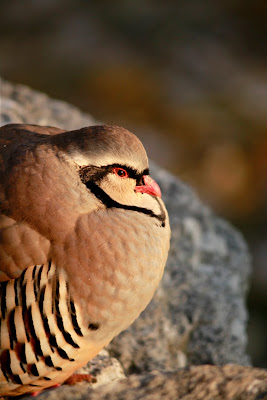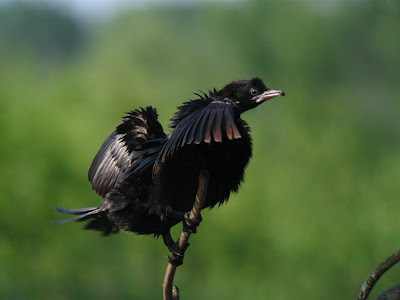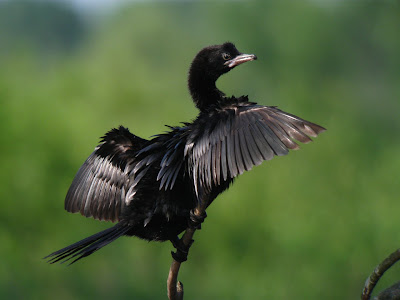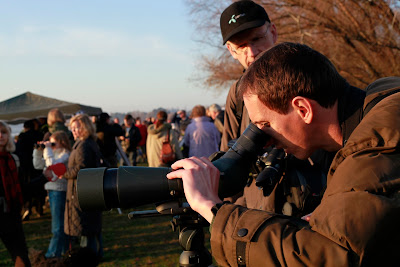Here are five things you should consider when wanting to get crisp, sharp digiscoping photos:
1. Get good focus - use the optical viewfinder of a DSLR or macro autofocus of a compact camera.
2. Understand your camera settings - use ISO and Aperture setting to get photos with low noise (low ISO) and with a wide open aperture (smallest f number in Aperture Priority mode) to get the fastest shutter speed possible for those conditions.
3. Use a remote release of countdown timer - anything that lets you reduce the shake of the camera will improve the sharpness of the images taken with the digiscoping setup
4. Use a stable platform - carbonfibre tripods are light and dampen vibrations effectively. If you are using a tripod, make sure you use a telescope balance rail as adding the weight to the back of the telescope tends to pull the whole setup out of balance and introduce/accentuate camera shake. Even better than a tripod is a Bean Bag. These are very easy to make and - filled with beans, rice or corn - make excellent vibration-dampening camera/telescope supports.
5. Use good quality optics - photographers have been saying this for decades: buy good quality lenses first, and then think about upgrading your camera body. Applied to digiscoping, the quality of the image coming through your scope will largely determine the quality of the image you are able to get out of your digiscoping setup.
btw, those really are real live hippos in the background. they kill more people in Africa than all other living creatures put together: snakes, bees, sharks, lions, spiders... (oh, that list is long)
This video is from our new
Swarovski Optik Birding YouTube channel, please go along and subscribe, we'll be bringing out lots of cool videos in the future (and there are already some there).
Happy digiscoping,
Dale










